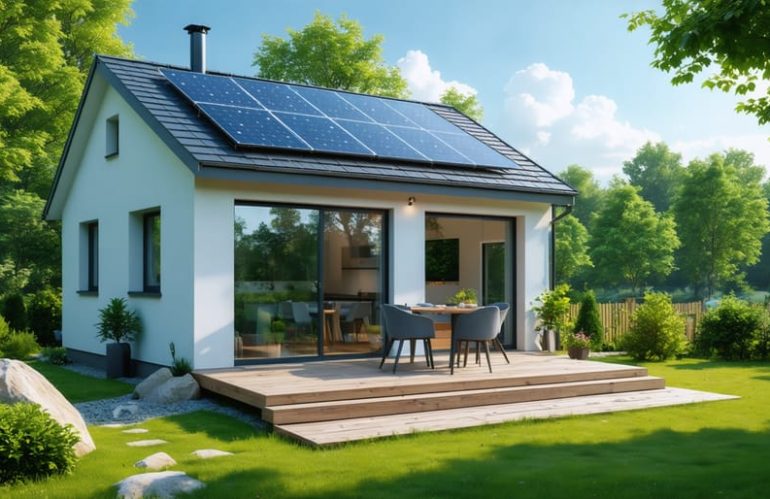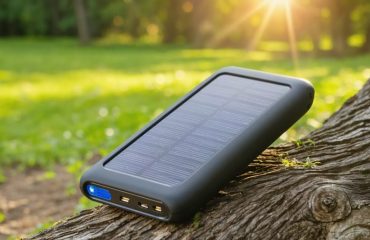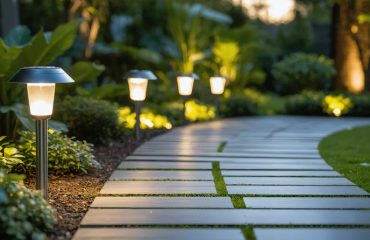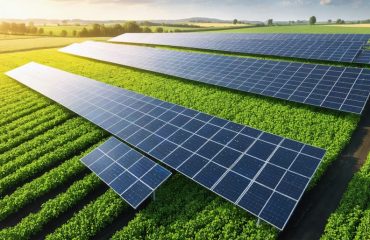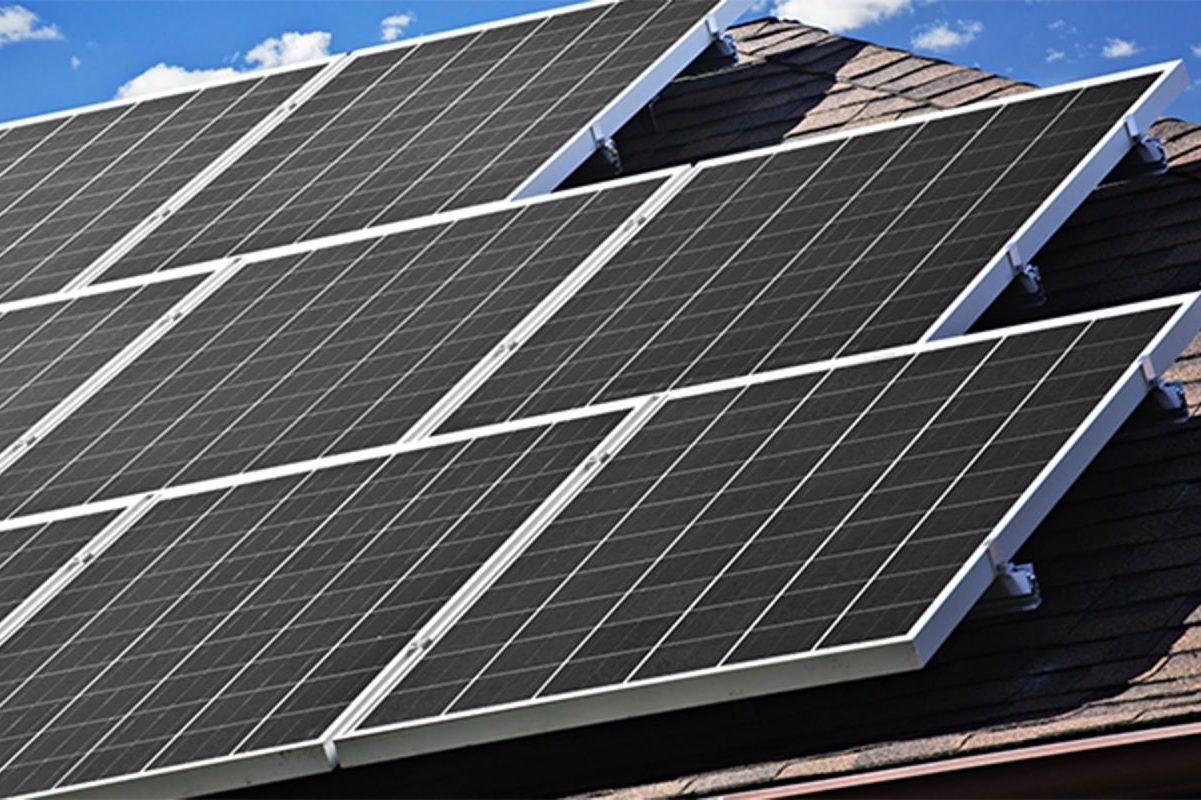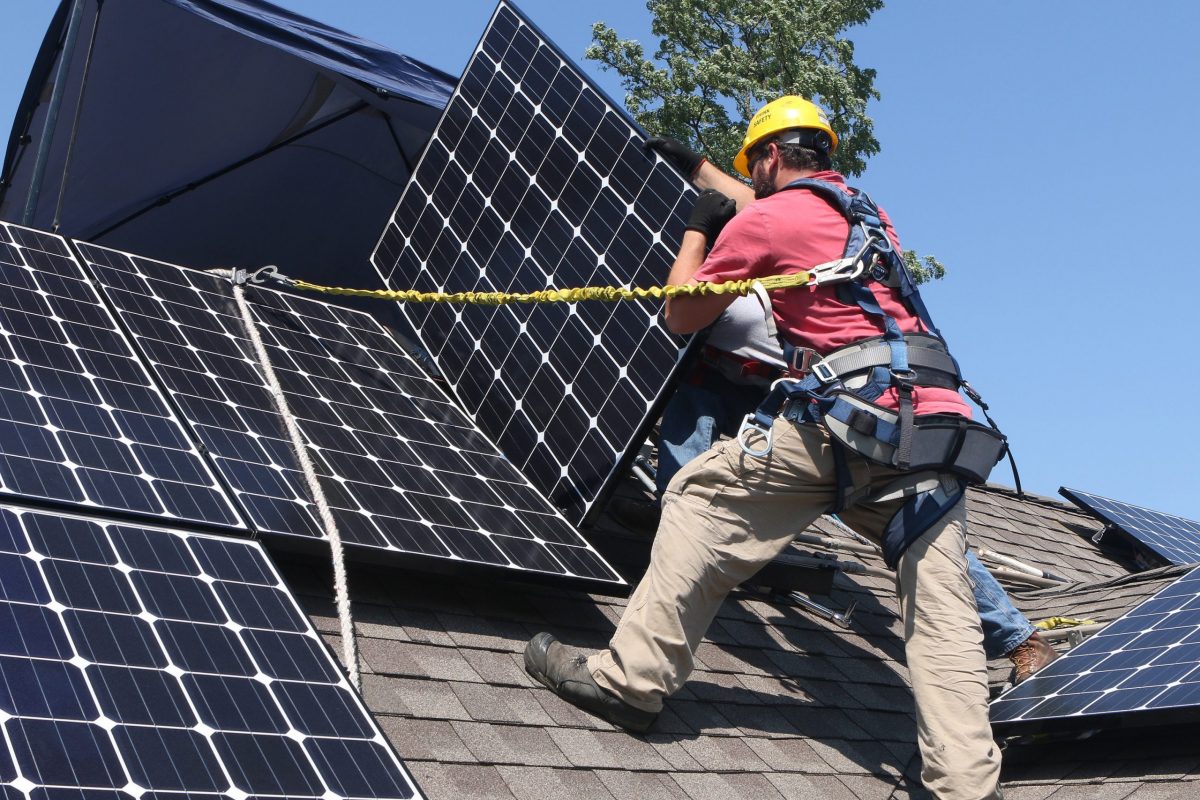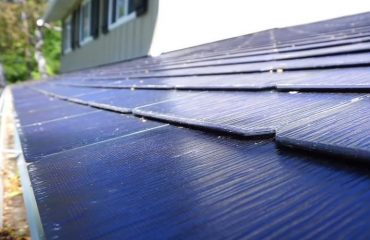Imagine powering your entire small home with nothing but sunshine – it’s not just possible, it’s becoming the new standard for sustainable living. Solar-powered small houses represent the perfect fusion of eco-conscious design and practical efficiency, offering homeowners a path to energy independence while minimizing their environmental footprint. These innovative dwellings, typically ranging from 100 to 1,000 square feet, combine advanced solar technology with smart space utilization to create fully self-sufficient living spaces that slash energy bills and eliminate carbon emissions.
Recent advances in solar panel efficiency and battery storage systems have made it increasingly viable to power even the most demanding household needs through solar energy alone. Whether you’re considering a tiny house on wheels or a compact permanent structure, integrating solar power from the design phase ensures optimal energy harvesting and seamless integration with your daily lifestyle. The combination of reduced square footage and solar technology creates a powerful synergy – smaller spaces require less energy to maintain comfortable temperatures, while modern solar solutions provide more than enough power for all essential appliances and electronics.
With energy costs rising and environmental concerns mounting, solar-powered small houses offer a practical solution that aligns with both financial wisdom and ecological responsibility. This comprehensive guide explores everything you need to know about making your small house dreams a solar-powered reality.
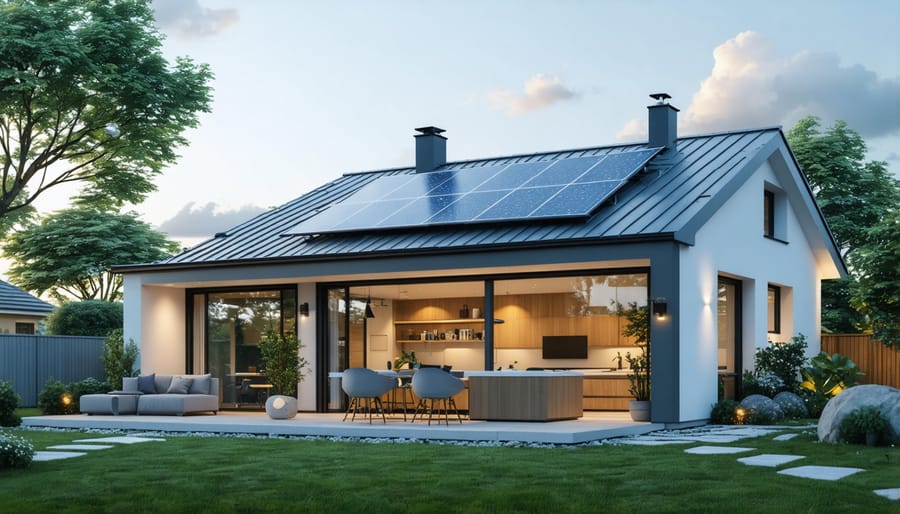
Why Small Houses Are Perfect for Solar Power
Energy Efficiency Benefits
Small houses inherently offer exceptional energy efficiency advantages, making them ideal candidates for solar power integration. Their compact size naturally requires less energy for heating, cooling, and general power consumption, creating a perfect synergy with solar technology. A typical small house uses 60-80% less energy compared to conventional homes, significantly reducing the number of solar panels needed for complete energy independence.
The reduced square footage means fewer solar-powered home lights and appliances are needed, maximizing the impact of each solar panel installed. The simplified roof design of most small houses also provides optimal surface area for solar panel placement, often allowing for better sun exposure and more efficient energy collection throughout the day.
Additionally, small houses typically feature better insulation and more efficient use of natural light, further reducing energy demands. Many incorporate large windows and strategic orientation to maximize passive solar heating and cooling, working in harmony with active solar power systems to create a highly efficient living space that’s both comfortable and environmentally responsible.
Cost-Saving Advantages
Installing solar power in a small house offers substantial financial benefits that make it an attractive investment. Homeowners typically see a 50-70% reduction in their monthly electricity bills immediately after installation. Over time, these savings can amount to tens of thousands of dollars, especially in areas with high utility rates.
The initial investment is offset by various incentives, including the federal solar tax credit, which currently allows homeowners to deduct 30% of their solar installation costs from their taxes. Many states offer additional rebates and incentives, making the system even more affordable.
Small houses are particularly cost-effective for solar installation due to their reduced energy needs. A smaller roof area means fewer panels are required, resulting in lower upfront costs. Most small house owners can achieve complete energy independence with a 2-4 kW system, compared to the 6-10 kW systems typically needed for conventional homes.
Additionally, solar panels increase property value by an average of 4%, while requiring minimal maintenance costs. With most systems guaranteed for 25 years and actual lifespans often exceeding 30 years, the long-term financial benefits are substantial and predictable.
Essential Solar Components for Small Houses
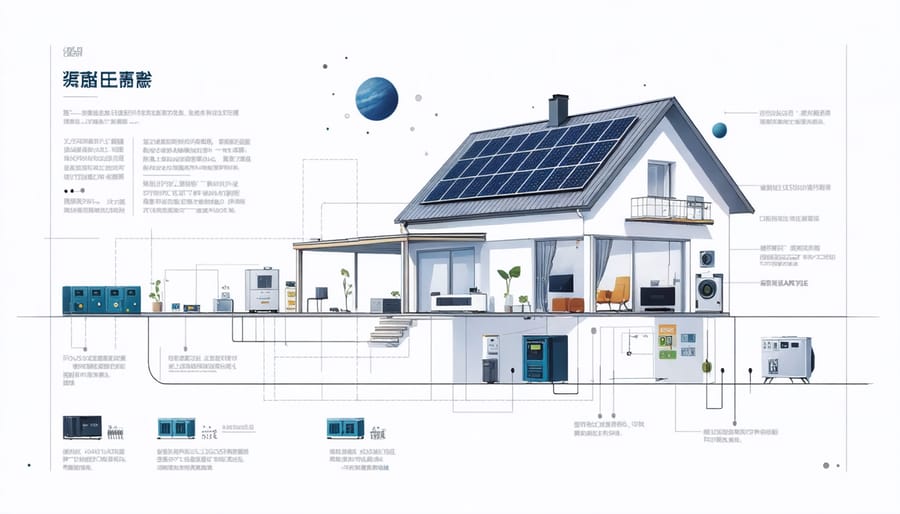
Right-Sized Solar Panels
Determining the right number and size of solar panels for your small house is crucial for optimal energy production and cost-effectiveness. Start by calculating your average daily energy consumption in kilowatt-hours (kWh) using your utility bills from the past year. For most small houses under 1,000 square feet, a system between 2kW and 4kW is typically sufficient, especially when combined with efficient solar-powered water systems and appliances.
Consider your available roof space or yard area for panel placement. Modern residential solar panels average 65 by 39 inches, producing between 250-400 watts each. For a 3kW system, you’ll need 8-12 panels, depending on their efficiency rating. Factor in your local climate, as areas with less direct sunlight may require additional panels to meet your energy needs.
Look for panels with efficiency ratings above 19% for optimal space utilization. Monocrystalline panels, while slightly more expensive, are ideal for small houses due to their higher efficiency and smaller footprint. Don’t forget to account for future energy needs and consider starting with a slightly larger system if your budget allows.
Work with a certified solar installer to conduct a detailed site assessment. They can help determine the best panel orientation, account for shade factors, and recommend specific panel types based on your local climate and energy goals.
Battery Storage Solutions
Efficient battery storage is crucial for maximizing your small home’s solar power system. Today’s compact battery solutions offer impressive storage capacity without taking up precious living space. The most popular option for small houses is lithium-ion batteries, which combine high energy density with a small footprint – perfect for tight spaces.
Wall-mounted batteries, like the Tesla Powerwall or LG Chem RESU, can be installed in utility closets or garages, saving valuable floor space. For even more compact solutions, some manufacturers offer modular battery systems that can be stacked or arranged to fit unusual spaces, allowing you to expand your storage capacity as needed.
When choosing a battery system, consider your daily energy usage and backup power needs. A typical small house usually requires 10-15 kWh of storage capacity to maintain power through the night and during cloudy days. Modern batteries also come with smart features that help optimize energy usage, such as automated power management systems that store excess energy during peak production and release it when needed.
To maximize battery life and performance, consider installing a climate-controlled battery enclosure. This protective housing can be placed outside your home, freeing up indoor space while ensuring optimal operating conditions for your storage system. Most current battery solutions come with warranties of 10 years or more, making them a reliable long-term investment for your solar-powered small house.
Smart Integration Features
Energy Monitoring Systems
Modern energy monitoring systems are essential for maximizing the efficiency of your solar-powered small house. These smart tools provide real-time insights into your energy production and consumption, helping you make informed decisions about your power usage.
Most solar installations come with basic monitoring capabilities through inverter apps, which show your daily solar production. However, more comprehensive systems can track individual appliance usage, battery storage levels, and even weather patterns affecting your solar output.
Popular monitoring solutions include apps like SolarEdge, Enphase Enlighten, and Sense, which offer user-friendly interfaces and detailed analytics. These systems typically feature mobile apps that let you check your energy status from anywhere, set usage alerts, and receive maintenance notifications.
Smart home integration takes monitoring further by connecting your solar system with home automation. This allows for intelligent power management, such as automatically running high-consumption appliances during peak solar production hours or adjusting battery usage based on weather forecasts.
The data collected helps identify energy waste, optimize consumption patterns, and verify system performance. Many homeowners report saving an additional 10-15% on their energy costs simply by using these monitoring tools to adjust their usage habits.
For maximum benefit, look for systems that offer both historical data analysis and predictive features, helping you plan for future energy needs while maintaining optimal efficiency in your solar-powered small house.
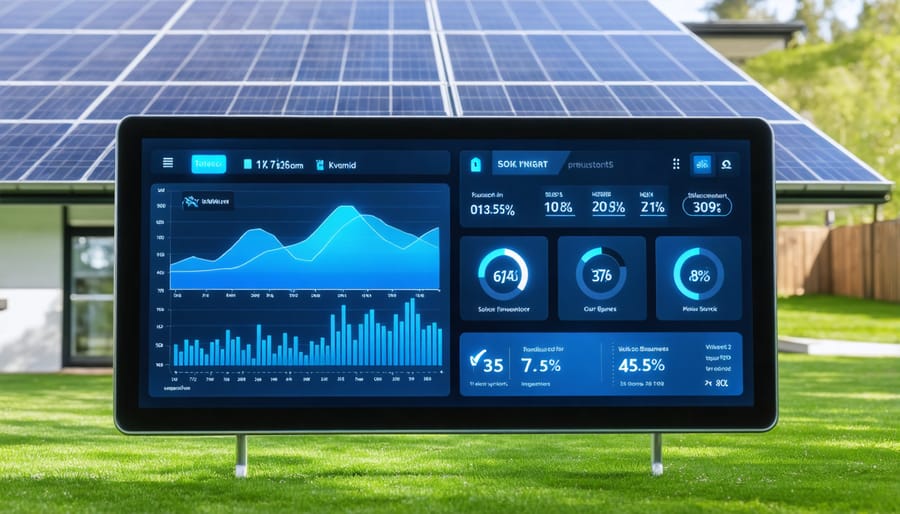
Automated Energy Management
Modern solar-powered small houses benefit greatly from automated energy management systems that maximize efficiency and comfort. These smart systems act as the brains of your home’s energy operations, constantly monitoring and optimizing power consumption to ensure you get the most from your solar investment.
At the heart of this automation is the smart home integration that connects your solar system with everyday appliances and devices. Smart thermostats learn your temperature preferences and adjust automatically based on occupancy and time of day. Energy monitoring apps provide real-time insights into your power generation and usage, helping you make informed decisions about when to run energy-intensive appliances.
Automated battery management systems ensure your stored solar energy is used efficiently, drawing from the grid only when necessary. Motion sensors control lighting and climate zones, while smart plugs can power down devices that aren’t in use, eliminating phantom energy drain. Many systems also feature weather-responsive controls that adjust your home’s energy usage based on upcoming weather forecasts.
These automated solutions not only maximize your solar investment but also simplify daily life. You can monitor and control your home’s energy use remotely through smartphone apps, receiving alerts about system performance and suggestions for optimization. The result is a home that intelligently balances comfort with efficiency, helping you achieve energy independence while reducing your environmental impact.
Real-World Success Stories
Urban Small House Solar Solutions
Urban dwellers are increasingly finding creative ways to harness solar power in small spaces. Take Sarah’s townhouse in Boston, for example – she installed a sleek 3kW system that powers her 800-square-foot home while maintaining the historic character of her neighborhood. The panels were strategically placed to maximize southern exposure while working within city regulations.
In San Francisco, innovative solutions like solar awnings and bifacial panels are helping homeowners make the most of limited roof space. These installations often double as shade structures for tiny urban gardens or rooftop patios, combining functionality with energy production. Many city residents are also incorporating battery storage systems, which fit neatly in basement utility rooms or garage spaces.
Vertical solar installations are gaining popularity in dense urban areas. In Seattle, several row houses have installed solar panels on their south-facing walls, complementing smaller rooftop arrays. These systems typically generate 2-4 kWh daily, enough to offset a significant portion of household energy use.
Community solar projects are another solution for urban small houses with limited individual installation options. In Brooklyn, a group of tiny home owners pooled resources to install a shared solar array on a nearby commercial building, allowing them to benefit from solar power without direct installation on their properties.
Cities are also making it easier for small house owners to go solar through streamlined permitting processes and innovative financing options. Many urban areas offer specific incentives for small-scale solar installations, making the transition to solar power more accessible for compact city homes.
Off-Grid Small House Adventures
From the rugged mountains of Colorado to the coastal plains of Maine, innovative homeowners are embracing off-grid solar solutions to power their small houses with remarkable success. Take Sarah and Mike Thompson, who built their 400-square-foot cedar cabin in Vermont’s Green Mountains. Their system, comprising six solar panels and a robust battery bank, powers everything from their energy-efficient appliances to their LED lighting system, even during the region’s notorious winters.
In Arizona’s Sonoran Desert, the Martinez family transformed a shipping container into a sustainable haven. Their compact 320-square-foot home harnesses the abundant desert sun through a minimal four-panel setup, proving that even modest solar arrays can support comfortable living when paired with thoughtful energy management.
Perhaps most inspiring is the story of retired teacher Linda Chen, whose 500-square-foot tiny house in the Pacific Northwest defies the notion that solar power requires constant sunshine. Through careful planning and energy-efficient design choices, her home maintains complete energy independence despite the region’s frequent cloud cover.
These success stories share common threads: smart design integration, careful consumption monitoring, and strategic use of energy-efficient appliances. Most homeowners report that their systems paid for themselves within 5-7 years through eliminated utility bills. They’ve also discovered unexpected benefits, like heightened awareness of their energy usage and a deeper connection to natural cycles.
These pioneering small house owners prove that with proper planning and modern solar technology, comfortable, sustainable living is achievable regardless of location or climate challenges.
As we’ve explored throughout this article, solar-powered small houses represent an exciting convergence of sustainable living and smart home design. These innovative dwellings offer numerous advantages that make them an attractive option for environmentally conscious homeowners. From significant energy cost savings and reduced carbon footprint to increased energy independence and modern comfort, solar-powered small houses deliver substantial benefits while maintaining a minimal environmental impact.
The combination of efficient space utilization and renewable energy technology creates a living solution that’s both practical and forward-thinking. By generating their own clean electricity, these homes not only help protect our environment but also shield homeowners from rising energy costs. The initial investment in solar technology is offset by long-term savings and potential tax incentives, making it an increasingly accessible option for many homeowners.
Whether you’re looking to downsize, minimize your environmental impact, or simply reduce your monthly expenses, a solar-powered small house offers a viable solution. With advancing technology making solar systems more efficient and affordable, there’s never been a better time to consider this sustainable living option. By choosing a solar-powered small house, you’re not just investing in a home – you’re investing in a cleaner, more sustainable future while enjoying the benefits of energy independence and reduced living costs.
Take the first step toward sustainable living by exploring how a solar-powered small house could fit your lifestyle and values. The future of housing is here, and it’s powered by the sun.

